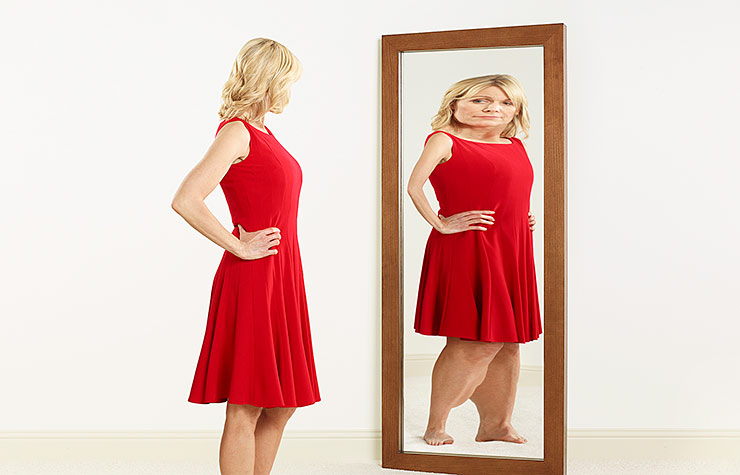
- Select a language for the TTS:
- UK English Female
- UK English Male
- US English Female
- US English Male
- Australian Female
- Australian Male
- Language selected: (auto detect) - EN
Play all audios:
These renewed concerns about weight and appearance frequently emerge alongside stressors unique to the 50-plus age group. Children leave home (or move back in), parents begin to age and
boomers may begin to struggle with health issues. Robin McKenzie, a 51-year-old resident of rural West Virginia, had suffered from an eating disorder since age 14, but it wasn't until
the illness and death of her father last summer that her disorder significantly worsened. McKenzie's mother's health was failing as well, and her father's death had left the
family saddled with massive amounts of debt. The burden of caregiving and financial management fell squarely on McKenzie's shoulders. "I began to exercise to relax," she says.
Plus, she began to eat less, and her weight plummeted to dangerous lows. Unable to concentrate at work, and with her heart, liver and kidneys beginning to fail, McKenzie was ultimately
hospitalized last August. Despite being much older than the stereotypical eating disorder patient, she was far from the oldest patient on the ward. Several patients were in their 60s or
older. NEW WAYS TO GET WELL Yet, maturity brings substantial advantages to fighting an eating disorder, experts say. Older patients have more life experiences and insights to draw on. In
addition, they're more painfully aware of the physical and psychological costs of maintaining their unhealthy eating patterns. Even those who have tried and failed to control disordered
eating in the past can often succeed later in life. "Lots of times older women feel such shame and hopelessness because they've had the eating disorder for so long, but I've
seen great things happen in people who have sought help in their 40s, 50s, 60s and beyond," Maine says. A growing awareness of eating disorders in older women (and some men) has also
led to more treatment options. Women whose illnesses are more severe or chronic may require hospitalization, or treatment at a live-in facility. There, all meals are provided, and women
participate in a variety of therapies, including cognitive behavioral therapy, nutritional counseling and medication. After a few small setbacks this past winter, McKenzie is maintaining her
weight and working toward a new career. Hodgins remains in therapy and is making progress. "Slow and steady wins the race, right?" she says. "I just want to be well. I want
to be a normal person." _Carrie Arnold is a freelance writer_


:max_bytes(150000):strip_icc():focal(119x0:121x2)/christina-applegate-240-5-a8cb06b5f1eb4f95aa9524ba79d84fd3.jpg)





